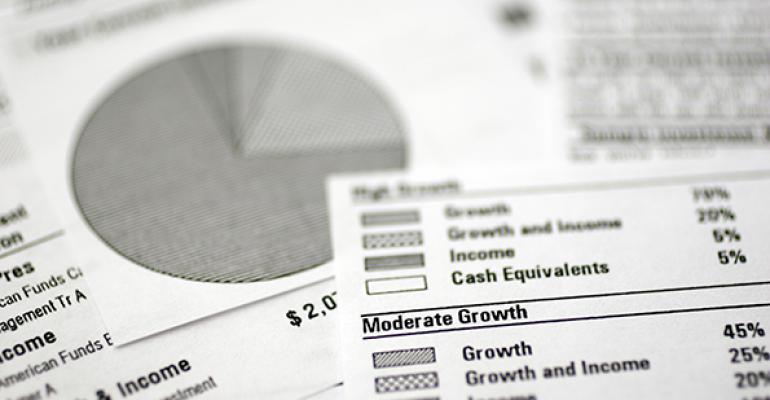By Keith Clark and Doug Hoefer
The Department of Labor’s new fiduciary rule will require full compliance by 2018, and some experts predict the ETF market to triple within a few years as a result. The 401(k) marketplace’s shift to index and passive funds has been about 10 years in the making, but the fiduciary rule has highlighted the movement.
The fiduciary rule was designed to protect and assist those saving for retirement. Now, the law of unintended consequences is placing additional pressure on investment advisors in the 401(k) marketplace.
Will the 401(k) industry be a major part of the ETF wave?
More importantly, can the 401(k) service industry find an efficient way to integrate ETFs with a very efficient mutual fund service model?
The movement to provide a low-cost investment menu has a good amount of momentum behind it, and now investment advisors and plan sponsors have been asking how they can include ETFs with their record-keeping service providers.
Based on the cost and trading variables, ETFs seem like a perfect fit for a 401(k) plan. ETFs typically have higher daily liquidity and lower fees than mutual fund shares, making them an attractive solution for 401(k) plans. ETFs have also long-intrigued investment advisors because they are low cost, transparent and traded on public stock exchanges.
However, it can be difficult to integrate ETFs into a standard 401(k) investment menu. There are several reasons for this, including:
- Inefficient Trading
The 401(k) record-keeping industry has yet to solve efficiently trading ETFs. The current process essentially turns the ETF into a mutual ‘like’ fund at the plan sponsor and participant level.
Today, traditional open architecture record-keeping service providers can have two trading deadlines: one for ETFs. which is 1-2 hours before market close, and the second at market close for traditional mutual funds. The ETFs can trade during the day, but only at the plan level — the participant level is valued similar to a mutual fund at market close.
What does this really mean?
Imagine you are a participant in a plan with a mixed menu of ETFs and mutual funds. When you put in a trade to transfer in or out of the ETF, the trade is most likely occurring near the end of the market day.
- Record keeping Dilemmas
A common misconception from the plan sponsor or participant perspective is each participant has their own account. This is untrue. The position at the mutual fund company or ETF is in the name of the plan. The record-keeping service provider tracks what you own at the ETF or mutual fund level.
Service providers with ETF solutions face a myriad of record-keeping dilemmas, especially where concerns such as when to process contributions and distributions, or how trades between ETFs should be handled.
- Mutual Funds Are More Efficient
Today, trading across mutual funds is efficient in the 401(k) marketplace. This is why the current ETF solution is to turn ETFs into pseudo mutual funds for efficient processing. The standard record-keeping platforms that permit ETFs within a traditional investment menu must also deal with the requirement that all trades are in whole shares — whereas mutual funds can be traded in fractional shares.
In the efficient mutual fund trading environment, distributions are processed at the NAV on the day the distribution is approved. The record-keeping service provider can deliver all distribution liquidation requests at the same time, as a mutual fund is only priced once a day at market close. For ETFs, the distributions can theoretically be sent in anytime when the marketplace is open. Participant transfers between funds is just as tricky.
All of this begs the question: Will ETFs really catch on in the 401(k) marketplace?
It is paramount to consider the cost of the underlying low cost of mutual funds and ETFs in conjunction with record keeping efficiency and overall service. In many cases, selecting index or passive funds has about the same underlying cost with less hassle.
For plan sponsors and investment advisors that want a 100 percent ETF investment fund menu – the good news is it is easy to find a financial service that has built a record-keeping system exclusively for ETFs.
Plan Sponsors of 401(k) Plans
Plan sponsors receive a lot of sales calls. Thanks to the new fiduciary rules, these calls are being answered–– and that’s where the confusion begins.
The bulk of these sales calls spend time on the service terms, such as 3(16), 3(21), and 3(38). This leads to scared plan sponsors, who are led to feel that they need to pay more to protect themselves.
This simply isn’t true.
The trends outlined here have been years in the making before the DOL rule was announced. They are picking up speed now that there is a deadline on these measures. The reason that implementation efforts are already underway is because compliance is mandatory before 2018–– not because the sky is falling, or some new revolutionary solution has been discovered. Resist getting swept up along with the bandwagon until your research is done.
Index products, especially ETFs, are low-fee and can minimize both fiduciary risk and potential conflicts of interest, if the 401(k) record-keeping industry can provide a true ETF solution where the participant can trade ETFs when the market is open.
The best thing investment advisors can do with their 401(k) clients is to keep their service message simple, detail their service model and work closely with their preferred record-keeping service provider to deliver a solution that meets the ideal investment menu solution for the plan participants.
Keith Clark and Doug Hoefer are co-founders of DWC ERISA Consultants, a firm dedicated to providing third party plan administration, compliance and consulting services for qualified retirement plans. For more information, visit dwcconsultants.com.





